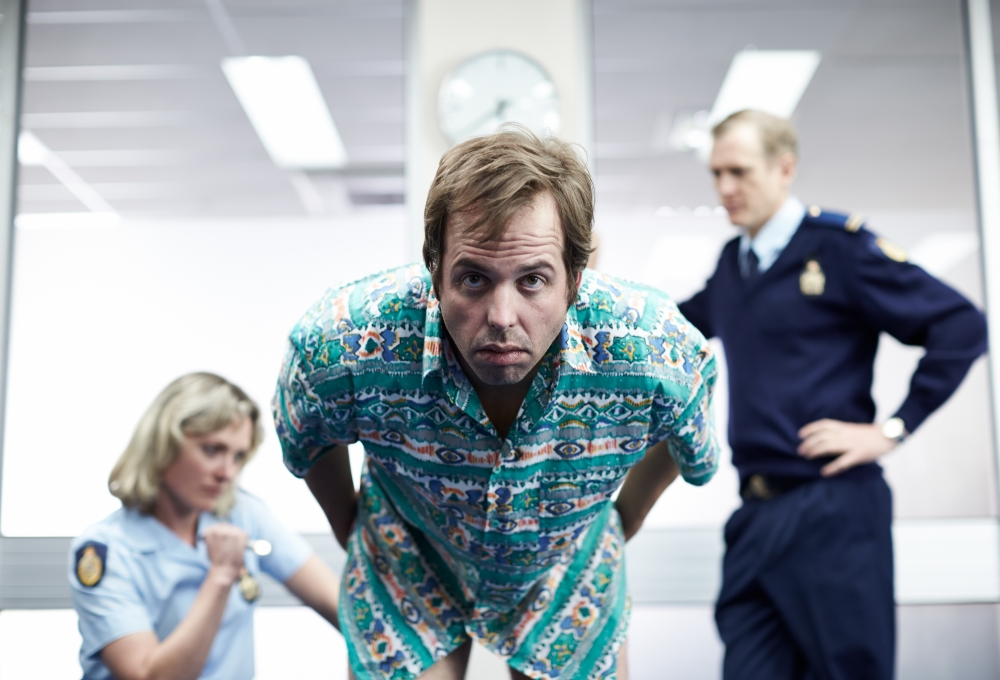The Mule (Tony Mahony & Angus Sampson, Australia, 2014)
Sometimes it is difficult to expect the Australian film screened on late night on SBS is too good not to have heard about it before. No matter how good a movie is, it would get buried if the marketing budget is not big like an Interstellar. It works like this, Australian films can be successful only if they get wide distribution, that is, the films have to be made accessible in more theatrical release which means they need larger production budget. It is something against the economic situation in Australian film industry at the moment.
Take a look at the recent Australian film The Mule as an example of a new strategy in distributing. The Mule is a dark comedy distributed by eOne in 2014. The ultimate goal when working on a film is always to get exposure in cinemas on the big screen. But The Mule’s team sees making the film more accessible to people all over Australia by went straight through a simultaneous iTunes and digital release for $25, which is not normally done by Australian films given the condition that Screen Australia requires films to screen in cinemas before they can be screened on other platforms (Bodey, 2014). They usually have to wait 120 days for the homes entertainment release after a theatrical release. The film was available for pre-order on iTunes from 29 September 2014, and for Download in Australia on 22 November 2014 on iTunes, Google Play, Dendy Direct, Xbox Video and PlayStation Store (Screen Australia, 2015). The film was available for online rental on the same platforms, and on DVD after 10 days.
As suggested, iTunes says the film is doing three times better than its estimates (Groves, 2014) and racked up no.1 indie title in iTunes Australia and US (West 2015). The film was released as a live event in which Angus Sampson (co-wrote, stars and co-directs with Tony Mahoney) and Leigh Whannell (co-wrote with Sampson) did a live commentary on the film on December 7, 2014 on Twitter and people were asked to give support by playing the film at 3pm and tagged tweets #TheMuleLive to join in. It reached over 2.5 million audience and trended to the fourth most tweeted hashtag in Australia during the event.
Certain levels of advertisement is still required to engage people on a certain level in order to ensure the marketing support for a box office success. Is it possible to market a low budget film with no noticeable marketing budget? Most common distribution scenario of low budget film is that it isn’t with prestige festival, no name cast, no large budget in marketing. It is a struggle for low budget film to secure distribution followed by reaching the audience. The cinema is made for the kinds of movies that have the budgets to afford and integrated media companies to produce. No matter how good a local film is, it is hard for them to reach audience through theatrical release with its lack of effective distribution support.
When the internet has opened the gates to inexpensive film production, it benefits filmmakers to target audiences and keep budget low compared to the traditional box office routine. Understanding the way viewers consume the content, it helps to stimulate the film industry. If Australian consumers do not head to cinema for local stuff, we should go aim for the online and post cinema markets, which is even better for low budget films.
It could be a fascinating approach for distribution for independent filmmakers considering a small marketing budget. It may be doubtful that it can guarantee similar revenue that conventional cinema distribution provides. According to Screen Australia’s report on Online and On Demand: Trends in Australian Online Video Use, audience engagement with screen content is heavily relied on video-on-demand (VOD) service. The report brings to attention that Australians are keen to watch any film or television content alone which allow them to pursue for more niche interests. Yet online viewers still spend comparatively more time on traditional platforms such as going to cinema, hiring DVDs and watching on television. Video-on-demand has explored the potential for films that have been failed to hit the cinemas to new audiences because it is clear that Australians are not going to see low-budget Australian films at the box office. We require a new distribution model for the digital age.
